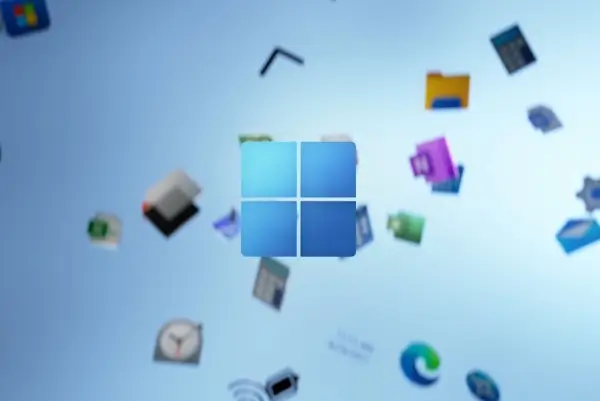When I bought my brand new Core i3 laptop, I was hoping to get better performance and the utility to run more resource intensive applications and games with ease. While it worked quite well for most applications, it started overheating and shutting down when I ran video encoding tasks or played games on it. In the wake of this dilemma I bought a new cooling pad but that only gave me a 1-2°C difference in temperature. After constant monitoring of my laptop over the past 10 months using Speccy, I was able to finally find a solution to this problem. I have listed a few simple tips that can help you avoid thermal heating issues on your laptop or desktop PC and easily reduce as much as 10-15°C of hardware temperature. These tips can be handy for all kinds of users including hardcore gamers, video encoding software users, virtual machine administrators and other common users who just want to work on their computers without worrying about overheating issues.
Change Processor State (Laptops)
This is perhaps the most effective way of avoiding thermal heating and is no doubt the best method that I have so far come across. In this method, you reduce the maximum processor state from battery options (as instructed below), which enables slightly reducing the processors performance. For example, if you are playing a game, your system will heat up if the processor state reaches 100%, however reducing it to say 90 or 95% causes an unnoticeable change in performance but reduces the heat up by 10-15C.
Instructions
To change the maximum processor state settings, go to Power Options from the Control Panel or by right-clicking on the system tray battery icon (as shown in the below screenshot).

Now click on Change Plan Settings –> Change Advanced Power Settings (for your existing power plan e.g. “Balanced”.

In the window that pops-up, click Processor Power management, followed by Maximum processor state, and reduce the on battery and plugged in power settings. The settings that you keep will depend on your preferences and the capability of your laptop.For example, you may reduce it to 85% for on battery and 90% for plugged in or even lower. You might have to change these settings 1-2 times to see what suites you. My personal laptop settings are 80% on battery (as that can also help conserve battery power) and 90% for plugged in).

Turn Off Visual Effects (Laptops And Desktops)
Many users are unaware of the fact that system performance and heating can be due to higher visual effects. Such effects are just for eye candy and merely strain your system and add to thermal heating. While running applications, which have led to thermal heating, I have been able to reduce at least 10°C by turning off all visual effects. You may keep the Windows Aero Glass effect but turn off other unwanted shadows and fade effects, which might not even get noticed when they are turned on/off. See below instructions to find out how to change your visual effect settings.
Right-click on My Computer and go to properties.

Now, click Advanced Settings.

Select Performance (visual effect) Settings, (as shown in the below image).

From here, click Custom and turn some or all effects. This will reduce overheating issues for your system and also improve performance.

Reduce Affinity (Laptops And Desktops)
Reducing the number of cores of a processor that an application is allowed to use can also prevent thermal heating as the system normally heats up up when a resource intensive program uses up more resources. There are three ways by which you can change processor core allocation for any software.
Method 1 (use built in program options)
Many software allow you to set processor allocation, you can use the built-in option to reduce the number of cores that an application uses to avoid thermal heating. For example, if you have a processor with four cores, then you can reduce the core allocation to e.g. 2 to avoid laptop overheating.

Method 2 Manually Change Affinity
If a software or a game does not have the option to reduce the number of allocated cores, then you can do so manually by following this method.
Right-click the task bar and select Task Manager.

Now go to the running application’s name, right-click on it and select “Go to process”.

Right-click on the process of the program (e.g. Firefox.exe) and click “Set Affinity”.

Now reduce the number of cores that the software is using to over thermal heating, by running it on fewer cores of your processor. Core 2 Duo has 2 cores, i3 and 15 laptops technically display four cores (as each core has dual processing known as hyper threading so the two cores work as good as four), whereas corei7 displays 6-12 cores (depending upon your model).

Method 3 Set Affinity To Work Automatically
Using method 2 has a drawback i.e. each time the application is started again, you will have to set affinity again to reduce core allocation, therefore, you can use a simple software to resolve your problem, known as RunWithAffinity. This application creates a shortcut on your desktop or any folder of your choice, with your defined core allocation setttings for a software.
To get started, launch this portable software and select the EXE file or it’s shortcut (such as the EXE file of a game or a software shortcut from your desktop). Now select the number of cores to allocated to the software or game and click Create Shortcut. By default all shortcuts are create on the desktop, but you can also change the folder path.

As you can see I have created a desktop shortcut with 2 core allocation for the Street Fighter Arcade Edition game, which was causing thermal heating issues on my laptop. The next time you have to run a game or application with lesser cores, just double click the RunWithAffinity shortcut, to run it with your allocated number of cores.

RunWithAffinity works on the following windows operating systems:
Windows XP
Windows Vista
The above mentioned tips should easily prevent your laptop or desktop computer from overheating. You may apply some or all of the above mentioned tips to prevent your system from shutting down due to thermal heating or from eventually getting damaged due to it.
If you would like to use an application for checking the temperature of your desktop or laptop, then see my review of Speccy Software, which displays the temperature of your CPU, Motherboard and hard disk.





